Though we had a couple of positive decisions for software patents in 2018, we also had many negative decisions. The pendulum has not yet swung firmly into pro-software patent territory. Software patents were found to be non-statutory in the following 2018 Federal Circuit decisions:
Move v. Real Estate Alliance
The following is a representative claim of a software patent that was found to be abstract without covering more than the use of a computer for a conventional business purpose:
1. A method using a computer for locating available real estate properties comprising the
steps of:
a) creating a database of the available real estate properties;
b) displaying a map of a desired geographic area;
c) selecting a first area having boundaries within the geographic area;
d) zooming in on the first area of the displayed map to about the boundaries of the first area to display a higher level of detail than the displayed map;
e) displaying the zoomed first area;
f) selecting a second area having boundaries within the zoomed first area;
g) displaying the second area and a plurality of points within the second area, each point representing the appropriate geographic location of an available real estate property; and
h) identifying available real estate properties within the database which are located within the
second area.
The Federal Circuit stated that while they do not suggest that every claim involving the collection, organization, manipulation, or display of data is necessarily directed to an abstract idea, this claim is not meaningfully distinct from claims they have previously held were directed to abstract ideas, such as in Electric Power Group, LLC v. Alstom S.A. Further, there were similarities to other claims that “simply use computers to serve a conventional business purpose.” such as in Affinity Labs of Tex., LLC v. DIRECTV, LLC.
The following is a representative claim of a software patent for identifying invalid clicks:
1. A method for identifying invalid click(s) by a system including at least one web page on a server side computing device, the at least web page providing a plurality of links associated with a plurality of other web pages associated with a plurality of merchants, the method comprising the steps of:
- generating a first code on the server side computing device, the first code identifying at least one device on a client side;
- sending said first code to said at least one device over a communication network;
- obtaining from the device on the client side, a second code when said at least one user performs a first click on at least one of said links associated with at least one of said other web pages at a first time;
- obtaining from the device on the client side, a third code when said at least one user performs a second click on said at least one link associated with said at least one other web page at a second time; and
- determining, by the server side computing device, whether said second click is invalid by examining a difference between said first time and said second time.
The Federal Circuit held that the asserted claims are directed to the abstract idea of collecting, transmitting, analyzing, and storing data to detect fraudulent and/or invalid clicks based on the time between two requests by the same device or client, and found that this was analogous to claims they found patent-ineligible in Electric Power Group., LLC v. Alstom S.A.
Automated Tracking Solutions v. The Coca-Cola Company
The following is a representative claim:
1. A system for locating, identifying and/or tracking of an object, the system comprising:
a first transponder associated with the object;
a reader that is configured to receive first transponder data via a radio frequency
(RF) signal from the first transponder;
an antenna in communication with the reader and having a first coverage area;
a processor coupled to the reader, wherein the processor is configured to receive the first transponder data from the reader and to generate detection information based on the received first transponder data, the detection information comprising first sighting and last sighting of the first transponder in the first coverage area; and
a storage device that is configured to store the detection information.
The Federal Circuit stated that the representative claims are quite broad, reciting uses of RFID system components recognized in the specification to be routine and conventional. The claims do not use these conventional RFID components in a non-conventional combination or arrangement. The Federal Circuit did not see any error in the district court’s ultimate conclusion that the asserted claims are directed to patent-ineligible subject matter under 35 U.S.C. §101.
The Federal Circuit stated the claims were “directed to selecting and sorting information by user interest or subject matter, a longstanding activity of libraries and other human enterprises.”
They stated that the claims at issue here are directed to an abstract idea. They have held that “tailoring of content based on information about the user—such as where the user lives or what time of day the user views the content—is an abstract idea.” Affinity Labs of Texas, LLC v. Amazon.com Inc.
The following is a representative claim:
A method for remote mirroring of digital data, said method comprising the steps of:
copying the data from a primary network server to a nonvolatile data buffer in a data transfer unit which is digitally connected to the primary network server, the primary network server including an operating system which is capable of accessing a nonvolatile server store, the data copied to the data transfer unit being a substantially concurrent copy of data which is being stored by the operating system in the nonvolatile server store of the primary network server;
copying the data from the data transfer unit to an input end of a communication link which has an output end physically separated from its input end;
generating and sending a spoof packet to the operating system of the primary network server; and
copying the data from the output end of the communication link to a nonvolatile server store on a remote network server.
The Federal Circuit stated that the district court correctly found that the claims were directed to the abstract idea of backing up data , and that the claim limitations lacked an inventive concept as they invoke conventional computer components that do not function in combination in an inventive manner. They concluded that the district court did not err in finding the claims patent ineligible under 35 U.S.C. §101.
West View Research LLC v. AUDI AG
The Federal Circuit stated that the patents-in-suit generally disclose a system and subsystems that use computer hardware, software, and peripheral devices to collect, organize, and display information.
The claims do not go beyond receiving or collecting data queries, analyzing the data query, retrieving and processing the information constituting a response to the initial data query, and generating a visual or audio response to the initial data query. The Federal Circuit, citing again to Electric Power Group., LLC v. Alstom S.A., stated that collecting information, analyzing it, and displaying certain results of the collection and analysis” are “a familiar class of claims ‘directed to’ a patent-ineligible concept.”
Voter Verified v. Election Systems & Software
The following is a representative claim:
85. A method for voting providing for self-verification of a ballot comprising the steps of:
(a) voting by a voter using a computer voting station programmed to present an election ballot, accept input of votes from the voter according to the election ballot, temporarily store the votes of the voter;
(b) printing of the votes of the voter from the votes temporarily stored in the computer for the voting station;
(c) comparison by the voter of the printed votes with the votes temporarily stored in the computer
for the voting station;
(d) decision by the voter as to whether a printed ballot is acceptable or unacceptable; and
(e) submission of an acceptable printed ballot for
tabulation.
The Federal Circuit noted that, first, the claims as a whole are drawn to the concept of voting, verifying the vote, and submitting the vote for tabulation. Humans have performed this fundamental activity that forms the basis of our democracy for hundreds of years. Second, there is no inventive concept in the claims sufficient to transform them into patent-eligible subject matter. They concluded that the district court properly determined that the claims of the patent are invalid under §101.
In re Eberra
The following is a representative software patent claim:
1. A process for providing a television network comprising:
(a) opening at least one physical location for a production of a television program;
(b) requiring at least one customer to make a purchase of a product;
(c) allowing said customer to give a performance in said production of said television program, in exchange for making said purchase of said product;
whereby said purchase made by said customer results in said production of said television program
for said performance of said customer on said television network.
Starting at step one of the Mayo/Alice test, the Federal Circuit agreed with the U.S. Patent and Trademark Office Appeals Board’s conclusion that the claims at issue are directed to an abstract idea, namely “promoting the purchase of a product with the incentive being a spot in a television program, i.e. product promotion.” Like the concept of risk hedging, which the Supreme Court found to be an abstract idea in Bilski v. Kappos, the concept of product promotion is a “fundamental economic practice long prevalent in our system of commerce.”
Turning to step two, the Federal Circuit stated that each specific step in the claims—opening a location (which requires nothing more than finding a location), requiring a purchase, and allowing a performance in a television program—is a routine television-production or advertising
activity performed in a conventional way, as described in the specification. Thus, there is no inventive concept, and the claims are not patentable subject matter under §101.
The following is a representative claim:
A phonetic symbol system comprising:
a plurality of phonetic symbols, wherein each of said phonetic symbols is defined by one or more than one letter of English alphabet, the case or the style of said letter does not affect the sounds of said phonetic symbols, there are vowel phonetic symbols and consonant phonetic symbols of said phonetic symbols, each vowel is distinctively represented by one of said vowel phonetic symbols, and each consonant is distinctively represented by one of said consonant phonetic symbols.
The Federal Circuit stated that when, as here, claims of a patent application recite an abstract idea, the question becomes whether they contain “additional features” that embody an “inventive concept,” so as to nevertheless make them patent-eligible. The Federal Circuit stated that these claims, however, contain no “additional features” of any kind embodying an inventive concept. The claims merely encompass strings of English letters representing sounds. In short, there is no inventive concept that rescues them from patent ineligibility.
The following is a representative software patent claim:
1. A geospatial media recorder, comprising:
converting means for converting longitude and latitude geographic degree, minutes, and seconds (DMS) coordinate alphanumeric representations or decimal equivalent geographic coordinate alphanumeric representations and altitude alphanumeric representations into individual discrete all-natural number geographic coordinate and measurement representations; and
combining means for concatenating the individual discrete all-natural number geographic coordinate and measurement representations into a single discrete all-natural number geospatial coordinate measurement representation for identification of a geospatial positional location at, below, or above earth’s surface allowing user to geospatially reference entities or objects based on the identified geospatial positional location and point identification.
Starting at step 1, the Federal Circuit stated that they agreed with the district court’s conclusion that the claims at issue are directed to an abstract idea. Both claims are directed to, first, converting longitude and latitude coordinates into natural numbers—i.e. removing the decimal points and replacing any “+” signs with a “1” and any “–” signs with a 0—and second, concatenating the resulting natural numbers—i.e. joining the strings of resulting numbers together. In sum, the claims apply a mathematical methodology to convert geospatial coordinates into a single string of natural numbers. The Federal Circuit compared this to the concept of using a formula to convert binary-coded decimals into pure binary numerals, which the Supreme Court found to be an abstract idea in Gottschalk,
Turning to step 2, the only additional features recited in claim 1 are the preamble providing for “[a] geospatial media recorder,” and the limitation of “allowing user to geospatially reference entities or objects based on the identified geospatial positional location and point identification….” As the district noted, these additional features effectively do no “more than simply state the [abstract idea] while adding the words ‘apply it.’
Interval Licensing v. AOL
The following is a representative claim:
18. A computer readable medium, for use by a content display system, encoded with one or more computer programs for enabling acquisition of a set of content data and display of an image or images generated from the set of content data on a display device during operation of an attention manager, comprising:
[1] acquisition instructions for enabling acquisition of a set of content data from a specified information source;
[2] user interface installation instructions for enabling provision of a user interface that allows a person to request the set of content data from the specified information source;
[3] content data scheduling instructions for providing temporal constraints on the display of the image or images generated from the set of content data;
[4] display instructions for enabling display of the image or images generated from the set of content
data;
[5] content data update instructions for enabling acquisition of an updated set of content data from an information
source that corresponds to a previously acquired set of content data;
[6] operating instructions for beginning, managing and terminating the display on the display device of an image
generated from a set of content data;
[7] content display system scheduling instructions for scheduling the display of the image or images on the display
device;
[8] installation instructions for installing the operating instructions and content display system scheduling
instructions on the content display system; and
[9] audit instructions for monitoring usage of the content display system to selectively display an image or
images generated from a set of content data.
Regarding step 1, the Federal Circuit noted, referring to Electric Power Group, that some software-based claimed inventions have failed to pass section 101 muster, because they did not recite any assertedly inventive technology for improving computers as tools and/or because the elements of the asserted invention were so result-based that they amounted to patenting the patent-ineligible concept itself. In this case, Interval Licensing contended that the claimed “attention manager” provided a technological improvement to a computer system. The Federal Circuit disagreed and said that the focus of the claims here is directed to “providing information to a person without interfering with the person’s primary activity,” i.e. , the result-centric construction of the claimed “attention manager.” It is important to disclose and claim more than results of software methods.
The Federal Circuit agreed with the district court that the asserted claims are directed to the abstract idea of considering historical usage information while inputting data. The focus of the claims is in guiding database users by presenting summary comparison information to users before they input data. This is not a method “necessarily rooted in computer technology in order to overcome a problem specifically arising in the realm of wide access databases and DDR Holding s, LLC v. Hotels.com is not applicable. Further, claims are not saved from abstraction merely because they recite components more specific than a generic computer. In addition, guiding users’ selection of classifications, parameters, and values through displays of summary comparison usage information, which allows users to quickly and efficiently access hundreds of thousands or even millions of records, and still find only those few records that are relevant, are not improvements to database functionality.
57. A system for distributing real-estate related information, comprising:
one or more computers configured to:
receive user-provided information and determine a geographic region based on received user-provided information;
produce a plurality of automated valuation method (AVM) values using residential property information, the residential properties being within the geographic region, the AVM values reflecting current market estimates for the residential properties;
provide display information to a remote terminal over a publically accessible network based on the user-provided information, the display information enabling the remote terminal to generate a map-like display for the geographic region, the map-like display containing at least:
respective icons for each of a plurality of residential properties within the geographic region, the icons being spatially distributed relative to one another based on geographic information also residing in one or more computer-readable mediums; and
an AVM value for at least one of the plurality of residential properties within the map-like display, wherein each AVM value is pre-process [sic] such that an AVM value for the at least one residential property pre-exists before a user query of the respective property is performed,
and wherein the one or more computers update each of the AVM values without requiring a user query.
Beginning with Alice step one, the Federal Circuit easily concluded that claim 57 is directed to an abstract idea—specifically, a fundamental economic practice. Claim 57 merely recites the familiar concept of property valuation. As the Supreme Court explained in Alice, claims involving “a fundamental economic practice long prevalent in our system of commerce,” such as the concepts of hedging and intermediated settlement, are patent-ineligible abstract ideas.
Turning to Alice step two, the Federal Circuit concluded that claim 57 does not contain an inventive concept sufficient to “‘transform the nature of the claim’ into a patent-eligible application.” The elements of claim 57 simply recite an abstract idea executed using computer technology, such as “one or more computers” and a “remote terminal” on a “publically accessible network.” The applicants argued that an inventive concept arises from the ordered combination of steps in claim 57, but the Federal Circuit was not convinced. Claim 57 recites the basic steps of receiving user input, producing property valuations, and providing display information. This is a classic case of implementing an abstract idea on a computer, which is not eligible under Alice. Nor do the pre-processing limitations in the claim add anything more to make the claims eligible. Rather, the pre-processing limitations are directed to using a computer to perform routine computer activity. Nor was the Federal Circuit persuaded by Applicants’ Berkheimer argument that the Board failed to provide substantial evidence to support its rejection. Not every §101 determination contains genuine disputes regarding underlying facts material to the §101 inquiry. Applicants did not point to any unresolved factual disputes that would warrant such consideration here. In sum, the claims are directed to the abstract idea of property valuation and fail to recite any inventive concepts sufficient to transform that abstract idea into a patent-eligible invention.
I have summarized many of the negative software patent decisions of 2018 in a single post because I feel it is more important to focus on and learn from the positive decisions, to try to mold claims of a new patent application based on a similar analogous positive decision, to the extent possible. Therefore, I have made separate posts out of positive decisions and lumped various negative decisions together. It isn’t always possible to recite an inventive hardware improvement. When there isn’t a hardware improvement, the best one can do is analogize the invention to one that was previously held to be patent-eligible and to mold the claims and application to be able to argue that it is analogous to the claims such a patent. These decisions show that the pendulum has not yet started swinging more clearly into positive territory for software patents. But we do have some good news and guidance in cases like Core Wireless, Berkheimer, and Ancora Techs v. HTC America.
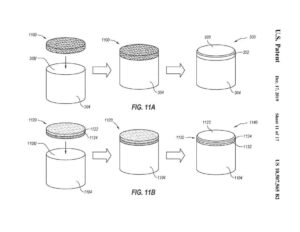 The ITC took 35 U.S.C. § 101 to its logical extreme in this case, finding that diamond drill bits with certain physical measures are not patent-eligible.
The ITC took 35 U.S.C. § 101 to its logical extreme in this case, finding that diamond drill bits with certain physical measures are not patent-eligible.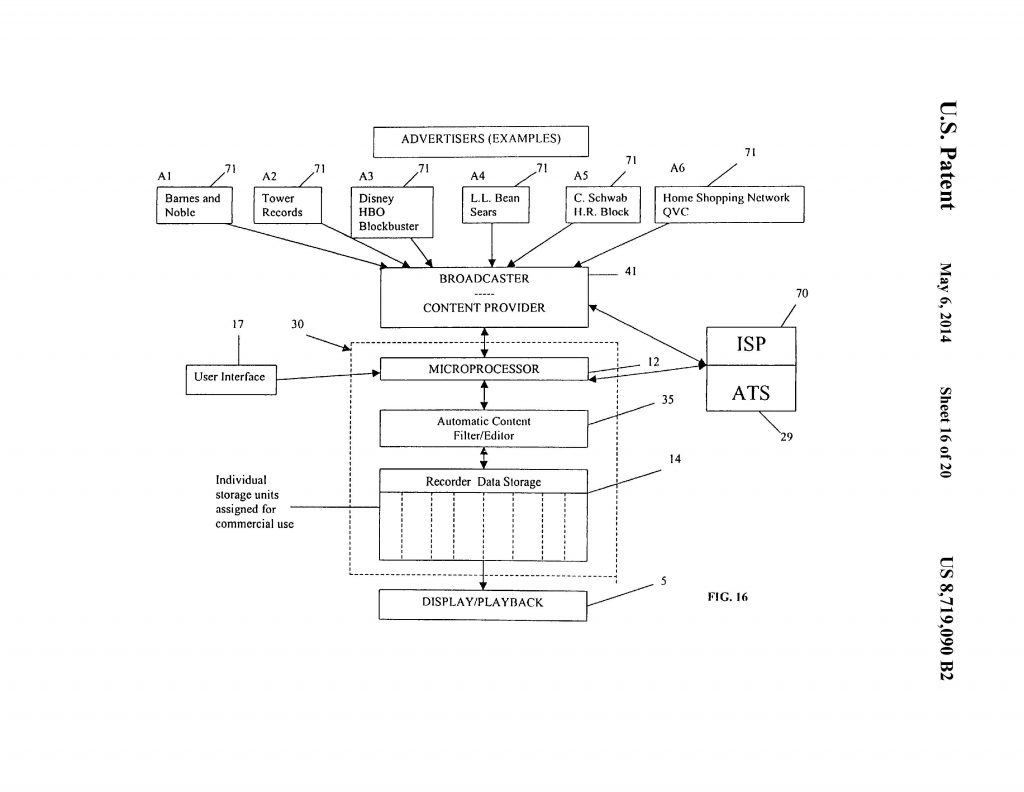 Customedia appealed a decision by the U.S. Patent and Trademark Office holding claims of U.S. Patent No. 8,719,090 and 9,053,494 ineligible under 35 U.S.C. § 101.
Customedia appealed a decision by the U.S. Patent and Trademark Office holding claims of U.S. Patent No. 8,719,090 and 9,053,494 ineligible under 35 U.S.C. § 101.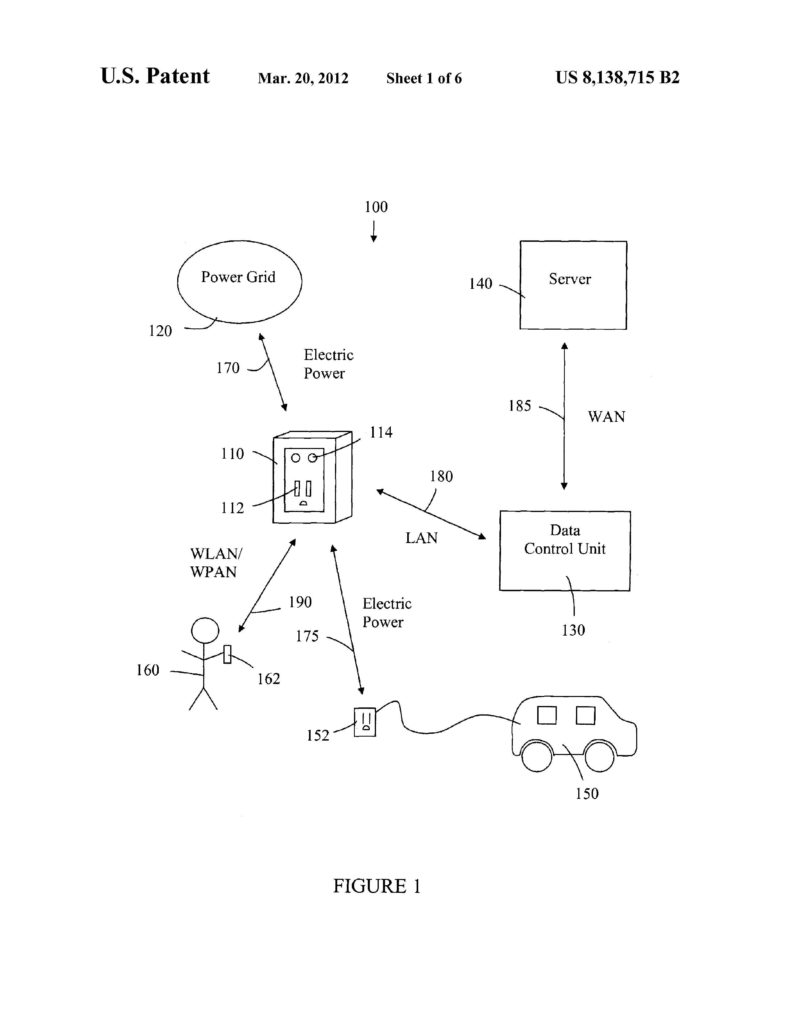 This is a software patent decision in which the court ignored a substantial amount of hardware in the patent claim and found that the claim was directed to an abstract idea and therefore invalid. In the
This is a software patent decision in which the court ignored a substantial amount of hardware in the patent claim and found that the claim was directed to an abstract idea and therefore invalid. In the 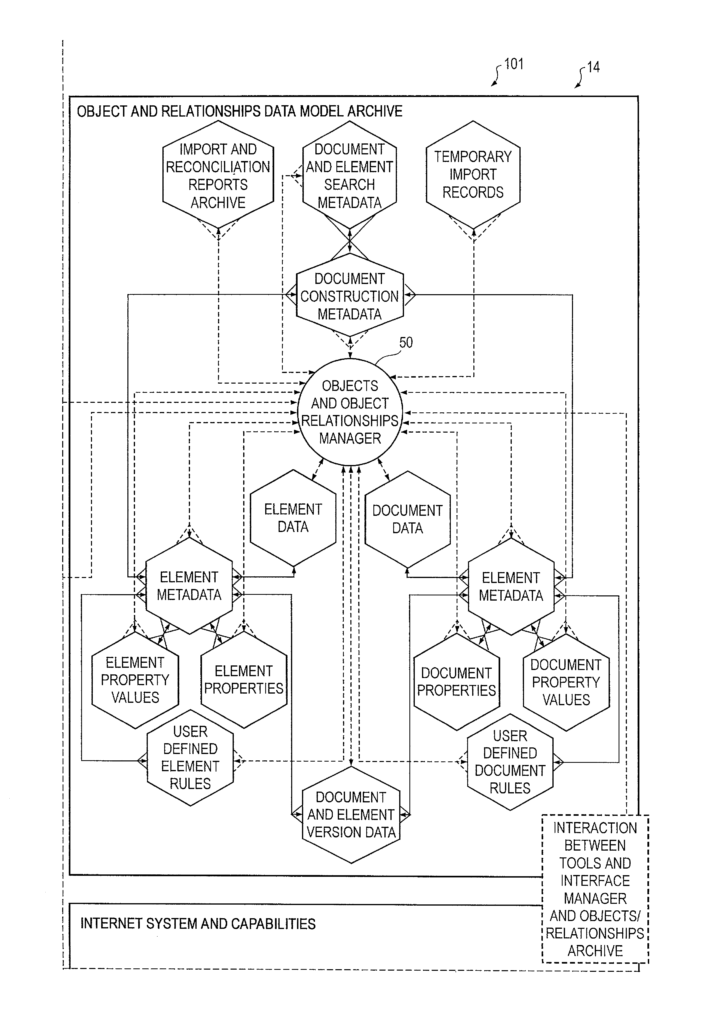 Mr. Berheimer sued HP. HP moved for summary judgment that claims 1–7 and 9 of U.S. Patent No. 7,447,713 are patent ineligible under 35 U.S.C. § 101, and the district court granted the motion.
Mr. Berheimer sued HP. HP moved for summary judgment that claims 1–7 and 9 of U.S. Patent No. 7,447,713 are patent ineligible under 35 U.S.C. § 101, and the district court granted the motion.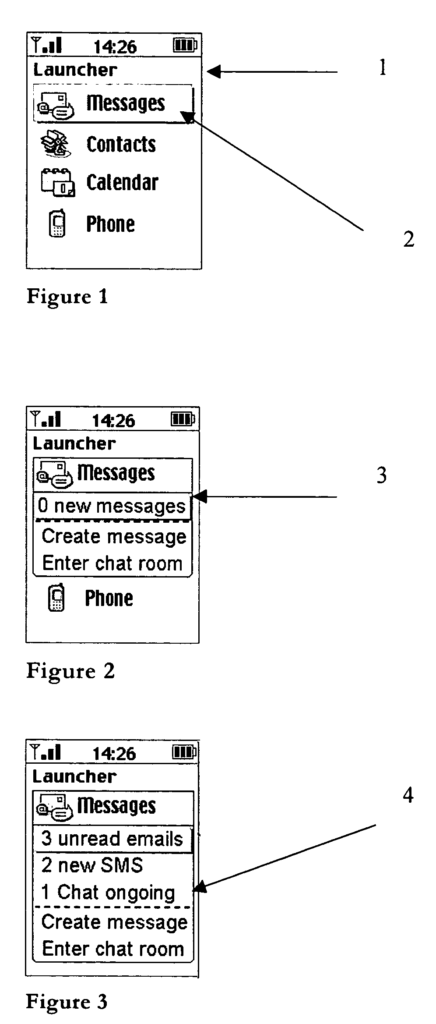 In this case, LG Electronics appealed from a district court decision denying summary judgement that claims 8 and 9 of a software patent, No. 8,713,476 and claims 11 and 13 of another software patent, No. 8,434,020 are directed to patent ineligible subject matter under 35 U.S.C. § 101.
In this case, LG Electronics appealed from a district court decision denying summary judgement that claims 8 and 9 of a software patent, No. 8,713,476 and claims 11 and 13 of another software patent, No. 8,434,020 are directed to patent ineligible subject matter under 35 U.S.C. § 101.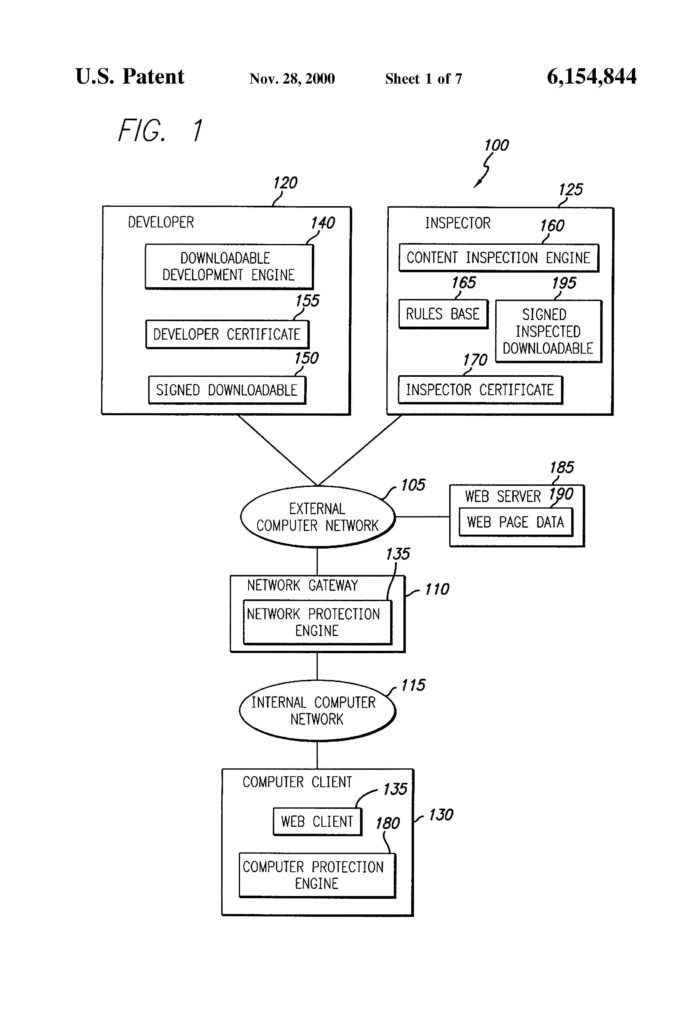 Finjan brought suit against Blue Coat for infringement of software patents directed to identifying and protecting against malware. One of the software patents is directed to a method of providing computer security by scanning a downloadable and attaching the results of that scan to the downloadable itself in the form of a “security profile.”
Finjan brought suit against Blue Coat for infringement of software patents directed to identifying and protecting against malware. One of the software patents is directed to a method of providing computer security by scanning a downloadable and attaching the results of that scan to the downloadable itself in the form of a “security profile.”